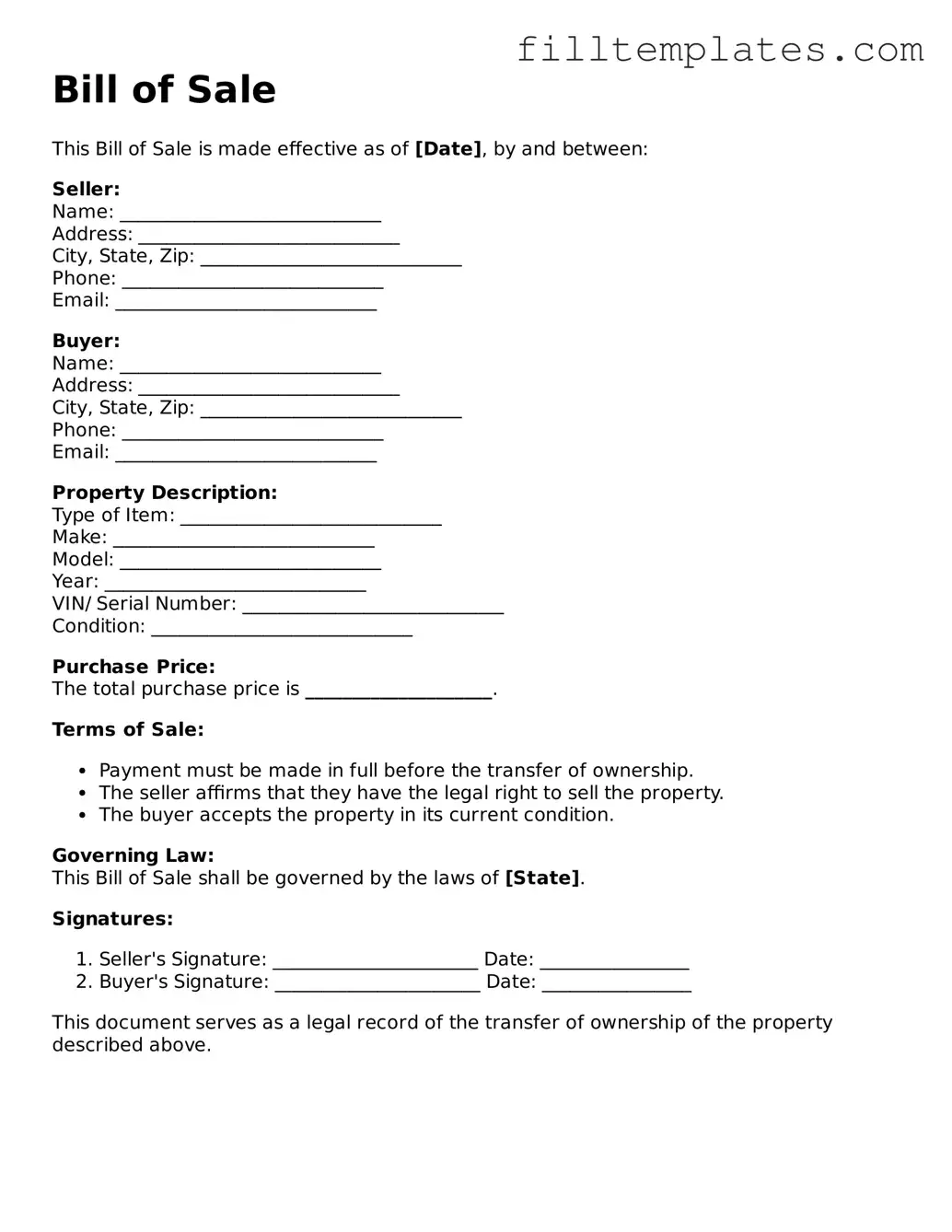Bill of Sale
This Bill of Sale is made effective as of [Date], by and between:
Seller:
Name: ____________________________
Address: ____________________________
City, State, Zip: ____________________________
Phone: ____________________________
Email: ____________________________
Buyer:
Name: ____________________________
Address: ____________________________
City, State, Zip: ____________________________
Phone: ____________________________
Email: ____________________________
Property Description:
Type of Item: ____________________________
Make: ____________________________
Model: ____________________________
Year: ____________________________
VIN/ Serial Number: ____________________________
Condition: ____________________________
Purchase Price:
The total purchase price is ____________________.
Terms of Sale:
- Payment must be made in full before the transfer of ownership.
- The seller affirms that they have the legal right to sell the property.
- The buyer accepts the property in its current condition.
Governing Law:
This Bill of Sale shall be governed by the laws of [State].
Signatures:
- Seller's Signature: ______________________ Date: ________________
- Buyer's Signature: ______________________ Date: ________________
This document serves as a legal record of the transfer of ownership of the property described above.
